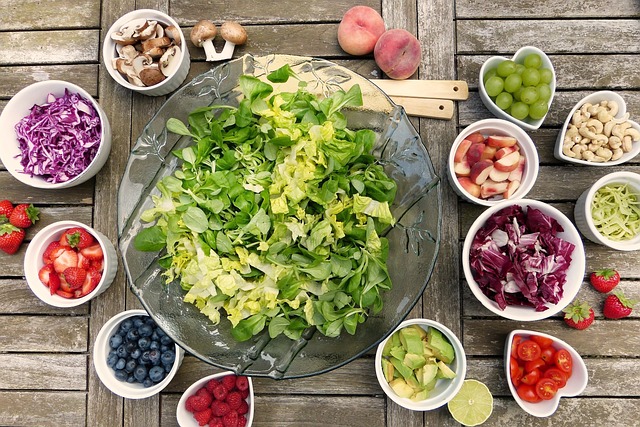For instance, it’s necessary to produce many hormones and keeps your cell walls elastic. However, excessive cholesterol (or cholesterol in the incorrect areas) raises issues, just like anything else in the human body. Cholesterol isn’t dissolved in water like fat can. It relies on molecules called lipoproteins to circulate the body alternatively. Find the best fibre supplements for kids to promote their general well-being and digestive wellness.
The impact of various lipoprotein types on well-being varies. For instance, having excessive amounts of LDL causes cholesterol to accumulate in blood vessel walls and could end up in:
- Obstructed arteries stroke
- Chest pain
- Renal failure
Here are numerous all-natural techniques to raise HDL (good) and decrease LDL (bad) cholesterol.
Table of Contents
Focus On Monounsaturated Fats
Unsaturated fats differ from saturated fats because they’re composed of a minimum of one double chemical link, which alters how your body utilises these. Monounsaturated fats possess just one double bond. Many advocate a low-fat diet to help people lose weight, however, there is conflicting evidence regarding how well it can lower blood cholesterol.
The possibility for low-fat diets to have adverse effects, including lowering HDL (good cholesterol) and raising triglycerides, worried experts. A diet rich in monounsaturated fats, like the Mediterranean diet, has been demonstrated to lower levels of dangerous LDL and raise concentrations of beneficial HDL, according to a study.
Use Omega-3s and Other Polyunsaturated Fatty Acids
Numerous double bonds in polyunsaturated fats cause them to function more distinctively in the body than saturated fats. According to research, polyunsaturated fats lower LDL (bad) cholesterol & lower the chance of developing cardiovascular disease. In a single experiment, for instance, polyunsaturated fats were substituted for saturated ones in the diets of 115 people over eight weeks. Total and LDL (bad) cholesterol levels had decreased by roughly 10% by the end of the research. Additionally, polyunsaturated fats could reduce the likelihood of type 2 diabetes & metabolic syndrome. In a different study, 5% of the calories from carbs were swapped out for polyunsaturated fats in the diets of 4,220 people. They had a smaller amount of fasting insulin and blood sugar, which suggested a reduced likelihood of type 2 diabetes.
Avoid Trans Fats
Unsaturated lipids have undergone a procedure known as hydrogenation to become trans fats. It is done to increase the stability of the unsaturated fats found in vegetable oils. The ensuing trans fats are referred to as partially hydrogenated oils (PHOs) since they are not entirely saturated. Since they are solid at room temperature, they provide spreads, pastries, and cookies with more substantial consistency than unsaturated liquid oils. The enhanced texture and shelf durability of trans fats is what draw food manufacturers to them. However, partly hydrogenated trans fats are processed in the body in an adverse manner relative to other fats.
Consume Soluble Fibre
A collection of various plant components known as soluble fibre may dissolve in liquid but are indigestible to humans. But the helpful bacteria in your intestines may break down soluble fibre. In actuality, they need it for sustenance. Those beneficial bacteria, often known as probiotics, have been demonstrated in studies to be able to lower LDL levels. A summary of the literature backed up previous results that whole grains, which are high in fibre, lower LDL and total cholesterol levels in contrast to control groups. The excellent news is that there is no evidence that whole grains decrease the amount of HDL cholesterol. Additionally, soluble fibre might improve the cholesterol-lowering effects of statin therapy. According to a 2014 study, statin treatment together with a rise in fibre-rich whole grain consumption was linked to better lipoprotein profiles in a sample of persons over 45.
Exercise
The cardiovascular system benefits from exercise. According to the AHA, 150 minutes per week of moderate aerobic activity is sufficient to decrease cholesterol concentrations. In a single investigation, 20 overweight women who exercised for 12 weeks lowered their levels of particularly dangerous oxidised LDL. They worked out three days a week for 15 minutes every doing low-intensity Korean dance, resistance band training, walking, & jumping jacks. Even low-intensity exercise, such as strolling, raises HDL, but the upside is increased by increasing the duration and intensity of your workouts. The heart’s rate during aerobic exercise ought to rise to about 75% of its optimum level. A 50% maximal effort ought to be used during resistance training. Exercise that raises the heart rate to 85% of maximal increases HDL while lowering LDL. The consequences are stronger when the time is longer.
Final Words
Although cholesterol serves vital physiological purposes, whenever levels are out of control, they may contribute to cardiovascular disease and blocked arteries. Heart disease is most often caused by LDL, which is vulnerable to free radical damage. HDL, on the other hand, defends from heart disease by transporting cholesterol back to the liver from vessel walls. Behavioural changes are the first line of defence if your cholesterol is out of control. Plant sterols and stanols, soluble fibre, and unsaturated fats may all raise good HDL and lower bad LDL. Losing weight & exercising also helps. Trans fat consumption and smoking are bad habits that must be avoided.
Also read this: How to Care for Your Contact Lenses: Top Tips from an Optometrist










